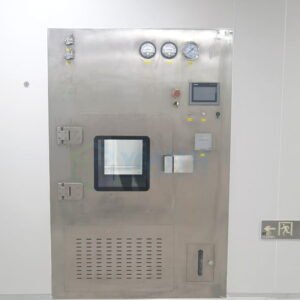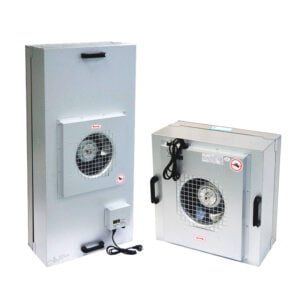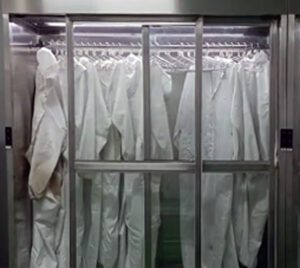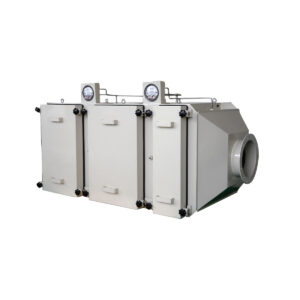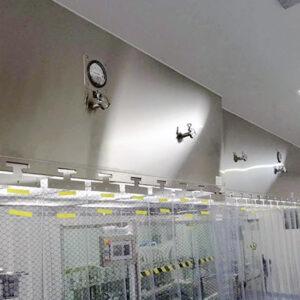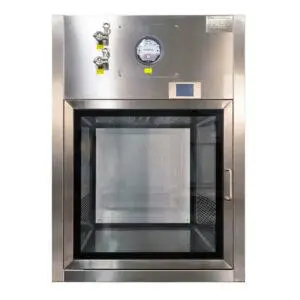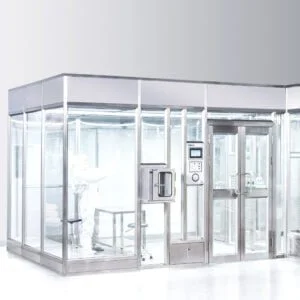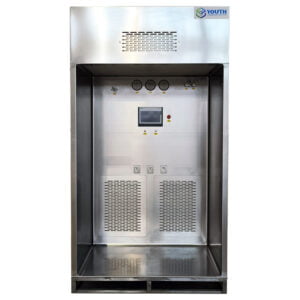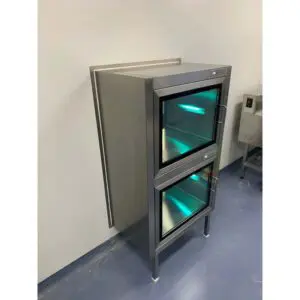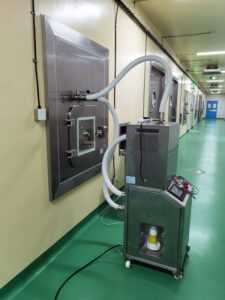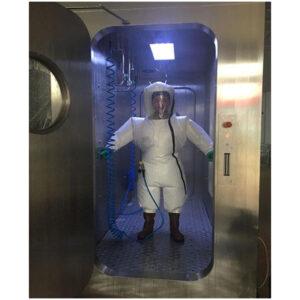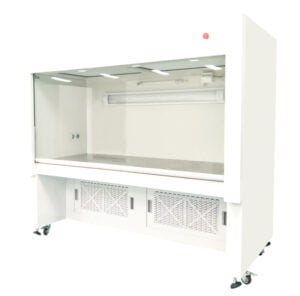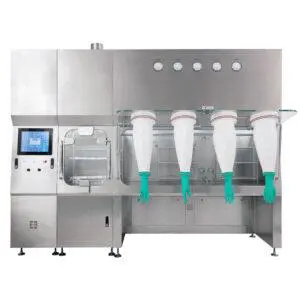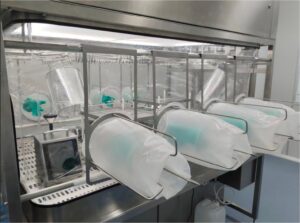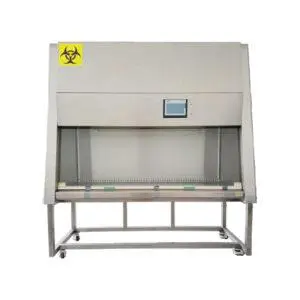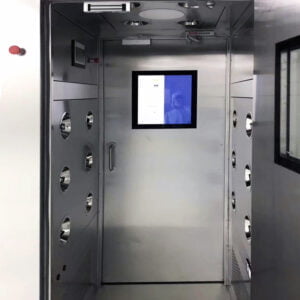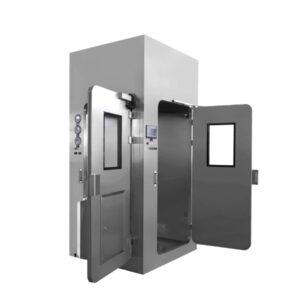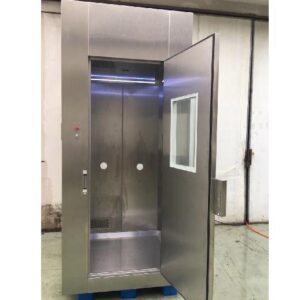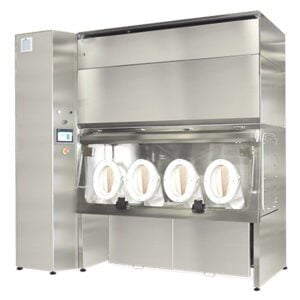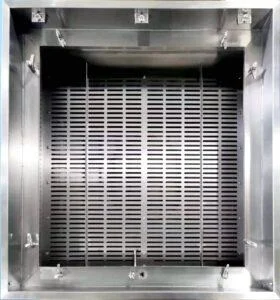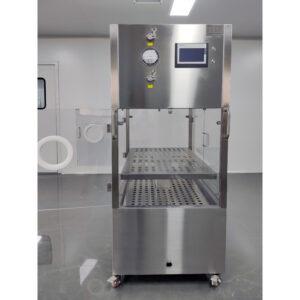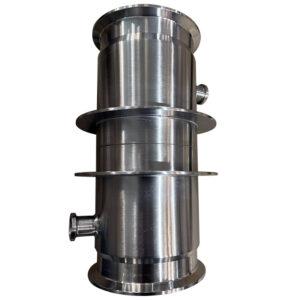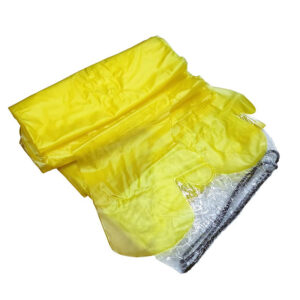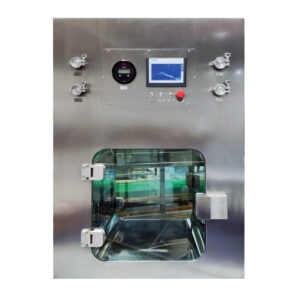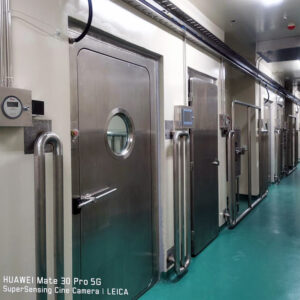In the realm of pharmaceutical manufacturing and laboratory research, maintaining sterile conditions is paramount. One technology that has revolutionized contamination control is the VHP isolator. These sophisticated systems combine the principles of isolation with the powerful disinfecting properties of vaporized hydrogen peroxide (VHP) to create ultra-clean environments for critical processes.
VHP isolators represent a significant advancement in aseptic processing and containment technology. They offer a high level of protection for both products and operators, ensuring the integrity of sterile compounds and safeguarding workers from exposure to hazardous materials. This article will explore the key features, applications, and benefits of VHP isolators, as well as the challenges and considerations in their implementation and operation.
As we delve into the world of VHP isolators, we'll examine their design, functionality, and the critical role they play in industries where sterility is non-negotiable. From pharmaceutical production to biomedical research, these systems are indispensable tools in the fight against contamination and in the pursuit of product quality and safety.
VHP isolators are essential in maintaining sterile conditions for critical processes, combining isolation technology with the disinfecting power of vaporized hydrogen peroxide to create ultra-clean environments.
How do VHP isolators work?
VHP isolators are complex systems designed to create and maintain a sterile environment. At their core, these isolators utilize a combination of physical barriers and chemical decontamination to achieve their goal. The process begins with the isolator chamber, which is a sealed enclosure that separates the internal workspace from the external environment.
The key to the effectiveness of VHP isolators lies in their decontamination cycle. This cycle typically involves the introduction of vaporized hydrogen peroxide into the sealed chamber. The VHP acts as a powerful biocide, eliminating a wide range of microorganisms including bacteria, viruses, and spores.
The decontamination process in VHP isolators is carefully controlled and monitored. It usually consists of several phases, including conditioning, gassing, dwell time, and aeration. Each phase is critical to ensure complete and effective sterilization of the isolator's interior surfaces.
VHP isolators achieve sterility through a combination of physical isolation and chemical decontamination using vaporized hydrogen peroxide, with a carefully controlled cycle to ensure complete microbial elimination.
| Phase | Description | Duration |
|---|---|---|
| Conditioning | Preparation of the chamber environment | 10-20 minutes |
| Gassing | Introduction of VHP | 30-60 minutes |
| Dwell Time | Maintenance of VHP concentration | 15-45 minutes |
| Aeration | Removal of VHP residues | 60-120 minutes |
What are the key components of a VHP isolator?
A VHP isolator is a sophisticated piece of equipment composed of several critical components. The main structure is the isolator chamber itself, which is typically made of stainless steel or other materials resistant to hydrogen peroxide. This chamber is designed to be airtight and maintain a controlled environment.
Another crucial component is the VHP generator, which produces the vaporized hydrogen peroxide used in the decontamination process. This generator must be capable of producing a consistent and controlled flow of VHP to ensure effective sterilization.
The isolator also includes a ventilation system with HEPA filters to maintain air quality and pressure differentials. Glove ports or half-suit systems allow operators to manipulate items within the isolator without compromising sterility. Additionally, transfer systems such as rapid transfer ports (RTPs) or airlocks facilitate the introduction and removal of materials.
Key components of VHP isolators include the sealed chamber, VHP generator, ventilation system with HEPA filters, operator access points, and material transfer systems, all working in concert to maintain a sterile environment.
| Component | Function | Material |
|---|---|---|
| Chamber | Main containment area | Stainless steel |
| VHP Generator | Produces sterilizing agent | Various |
| HEPA Filters | Air purification | Glass fiber |
| Glove Ports | Operator access | Neoprene/Hypalon |
| RTPs | Material transfer | Stainless steel |
What industries benefit from VHP isolator technology?
VHP isolators have found widespread application across various industries where sterility and contamination control are critical. The pharmaceutical industry is perhaps the most prominent user of this technology, employing VHP isolators in the production of sterile drugs, vaccines, and other sensitive compounds.
In the biotechnology sector, VHP isolators play a crucial role in maintaining the integrity of cell cultures and other biological materials. They provide a controlled environment for sensitive processes such as gene therapy production and stem cell research.
The medical device industry also benefits from VHP isolator technology, using these systems in the manufacture and packaging of sterile implants and surgical instruments. Additionally, research laboratories working with hazardous pathogens or highly sensitive materials rely on VHP isolators to ensure safety and experimental validity.
VHP isolators are essential in pharmaceuticals, biotechnology, medical device manufacturing, and research laboratories, where they ensure product sterility, worker safety, and experimental integrity in critical processes.
| Industry | Application | Benefit |
|---|---|---|
| Pharmaceuticals | Sterile drug production | Product quality |
| Biotechnology | Cell culture maintenance | Process integrity |
| Medical Devices | Sterile packaging | Infection prevention |
| Research Labs | Pathogen handling | Worker safety |
How does VHP compare to other sterilization methods?
When it comes to sterilization techniques, VHP offers several advantages over traditional methods. Unlike heat sterilization, VHP can be used on heat-sensitive materials and equipment. It's also more effective than UV radiation for sterilizing complex surfaces and hard-to-reach areas within an isolator.
Compared to ethylene oxide (EtO), another common sterilant, VHP is safer for operators and the environment. It breaks down into water and oxygen, leaving no toxic residues. This makes it particularly suitable for use in YOUTH cleanroom environments where residue-free operation is crucial.
VHP also offers faster cycle times compared to many other sterilization methods, allowing for quicker turnaround in production environments. However, it's important to note that VHP may not be suitable for all materials, as it can be corrosive to certain metals and may degrade some plastics over time.
VHP sterilization offers advantages in material compatibility, safety, and cycle time compared to heat, UV, and EtO methods, but material compatibility must be considered for long-term use.
| Method | Advantages | Disadvantages |
|---|---|---|
| VHP | Fast, residue-free | Material compatibility issues |
| Heat | Widely effective | Not suitable for heat-sensitive items |
| UV | Non-toxic | Limited penetration |
| EtO | Penetrates packaging | Long cycle times, toxic residues |
What are the regulatory considerations for VHP isolators?
The use of VHP isolators in regulated industries, particularly pharmaceuticals, is subject to strict oversight. Regulatory bodies such as the FDA in the United States and the EMA in Europe have established guidelines for the validation and operation of these systems.
Key regulatory considerations include the qualification of the VHP isolator system, validation of the decontamination cycle, and ongoing monitoring of performance. This typically involves demonstrating the effectiveness of the sterilization process through the use of biological indicators and chemical integrators.
Operators must also develop and follow standard operating procedures (SOPs) for the use and maintenance of VHP isolators. This includes regular testing and requalification of the system to ensure continued compliance with regulatory standards.
Regulatory compliance for VHP isolators involves system qualification, cycle validation, and ongoing performance monitoring, with strict adherence to established guidelines and SOPs.
| Regulatory Aspect | Requirement | Frequency |
|---|---|---|
| System Qualification | IQ/OQ/PQ | Initial setup |
| Cycle Validation | Biological Indicators | Each cycle |
| Performance Monitoring | Environmental Monitoring | Continuous |
| Requalification | Full system check | Annual |
What are the challenges in implementing VHP isolator systems?
While VHP isolators offer significant benefits, their implementation can present several challenges. One of the primary difficulties is the initial cost of the system, which can be substantial. This includes not only the isolator itself but also the associated infrastructure and validation processes.
Another challenge is the complexity of the system, which requires specialized training for operators and maintenance personnel. Ensuring consistent and effective decontamination cycles across different load configurations and materials can also be demanding.
Space constraints in existing facilities may pose difficulties in accommodating VHP isolator systems. Additionally, integrating these isolators into existing production lines or workflows may require significant process modifications.
Challenges in implementing VHP isolators include high initial costs, operator training requirements, cycle optimization complexities, and potential facility modifications for integration.
| Challenge | Impact | Mitigation Strategy |
|---|---|---|
| Initial Cost | Budget strain | Long-term ROI analysis |
| Training | Operational delays | Comprehensive training programs |
| Cycle Optimization | Production efficiency | Thorough validation studies |
| Facility Integration | Workflow disruption | Careful planning and design |
How is the future of VHP isolator technology shaping up?
The future of VHP isolator technology looks promising, with ongoing advancements aimed at improving efficiency, reliability, and ease of use. One area of development is in the automation of decontamination cycles, utilizing artificial intelligence and machine learning to optimize parameters based on load characteristics and environmental conditions.
Improvements in VHP generation technology are focusing on reducing cycle times and increasing the uniformity of vapor distribution. This could lead to even faster turnaround times and improved sterilization efficacy.
There's also a trend towards more modular and flexible isolator designs, allowing for easier customization and integration into various production environments. This could make VHP isolators more accessible to a wider range of industries and applications.
The future of VHP isolators involves increased automation, improved VHP generation technology, and more flexible designs, potentially expanding their applications and improving overall performance.
| Future Trend | Potential Impact | Timeline |
|---|---|---|
| AI-driven cycles | Improved efficiency | 3-5 years |
| Advanced VHP generation | Faster cycles | 2-4 years |
| Modular designs | Increased adaptability | 1-3 years |
| Enhanced connectivity | Better monitoring | 2-3 years |
In conclusion, VHP isolators represent a critical technology in the pursuit of sterility and contamination control across various industries. Their ability to provide a controllable, repeatable sterilization process within a contained environment makes them indispensable in pharmaceutical manufacturing, biotechnology, and research settings.
As we've explored, these systems offer significant advantages in terms of efficacy, safety, and versatility compared to other sterilization methods. However, their implementation and operation come with challenges that require careful consideration and planning.
Looking to the future, ongoing advancements in VHP isolator technology promise to address current limitations and expand their capabilities. As industries continue to demand higher standards of sterility and process control, VHP isolators will undoubtedly play an increasingly important role in meeting these challenges.
For those involved in sterile processing or considering the implementation of VHP isolator technology, staying informed about the latest developments and best practices is crucial. By understanding the principles, benefits, and challenges associated with VHP isolators, organizations can make informed decisions to enhance their sterility assurance and product quality.
External Resources
Pharmaceutical Technology – Isolator Decontamination Using Vaporized Hydrogen Peroxide – This article discusses the application of VHP in isolator decontamination, focusing on the process steps, equipment requirements, and the importance of maintaining controlled environmental conditions.
American Pharmaceutical Review – Decontamination with VPHP in isolators: ideas and reflections on optimising cycle times – This article provides insights into optimizing decontamination cycles using Vapor Phase Hydrogen Peroxide (VPHP) in isolators, including methods of introducing VPHP, factors affecting the cycle, and the importance of validation.
Steris – Vapor Phase Hydrogen Peroxide (VHP) Decontamination for Isolators – This page from Steris provides an overview of VHP decontamination for isolators, highlighting the technology, process, and benefits of using VHP for microbial decontamination.
- PDA – Validation of Vapor Phase Hydrogen Peroxide Decontamination Cycles – This PDA webinar presentation delves into the validation process for VHP decontamination cycles, including the use of biological indicators, critical parameters, and ensuring compliance with regulatory standards.
Related Contents:
- Vaporized Hydrogen Peroxide Sterilization: STERIS VHP Technology
- Vaporized Hydrogen Peroxide: The Future of Sterilization
- Vaporized Hydrogen Peroxide: A Powerful Sterilization Solution
- Vaporized Hydrogen Peroxide: Advanced Decontamination Technology
- Vaporized Hydrogen Peroxide Sterilization: The Future of Medical Device Safety
- Vaporized Hydrogen Peroxide: The Future of Decontamination
- Ultimate Guide to VHP Passbox Cleaning in Controlled Environments
- Vaporized Hydrogen Peroxide Generators: Revolutionizing Decontamination
- VHP Generators: Revolutionizing Decontamination in Cleanrooms


